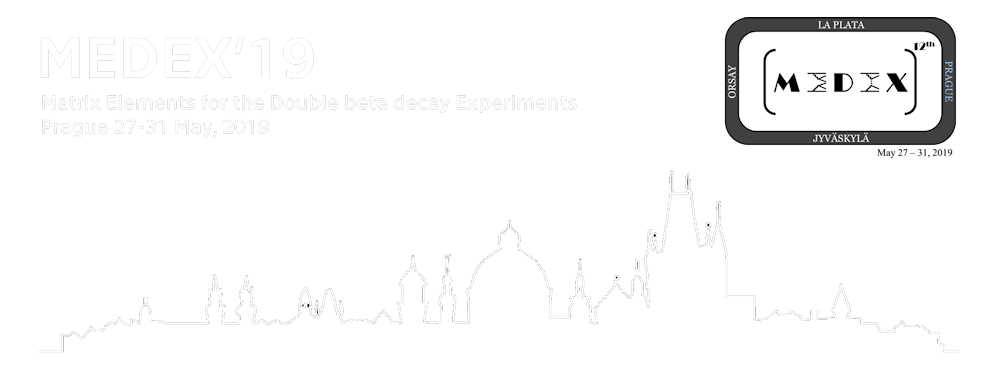Speaker
Ms
Lotta Jokiniemi
(University of Jyväskylä)
Description
To describe the double beta decay processes reliably one needs a possibility to test the
involved virtual transitions against experimental data. Unfortunately, traditional EC or $\beta^-$ -decay
experiments only allow probing the lowest transitions. However, the available data on charge-exchange or
OMC allows the examining of higher states.
In this work we manifest how to utilise the charge-exchange and OMC data in the study of $0\nu\beta\beta$ decay.
We compute the nuclear matrix elements (NMEs)for the light Majorana-neutrino mode of $0\nu\beta\beta$
decay by exploiting the available data on isovector spin-dipole (IVSD) $J^{\pi}=2^-$ giant resonances.
We calculate the OMC giant resonance in $^{100}$Nb and compare it with the experimental value,
and compare the computed total capture rate value with the Primakoff estimate. We also compute the OMC rates
to the daughter nuclei of some $0\nu\beta\beta$ decay triplets of immediate experimental interest.
In order to correctly describe the IVSD and OMC up to and beyond the giant-resonance
region, we perform the present computations in extended no-core
single-particle model spaces using the proton-neutron quasiparticle
random-phase approximation (pnQRPA) with two-nucleon interactions based on
the Bonn one-boson-exchange G matrix. We include the appropriate short-range correlations,
nucleon form factors, higher-order nucleonic weak currents, and partial restoration of the isospin symmetry
in the calculations.
Exploiting the IVSD $J=2^-$ data offers a new way of fitting the $g_{ph}$ value of pnQRPA which leads to
improved reliability of the $0\nu\beta\beta$ matrix elements.
The calculated first OMC giant resonance in $^{100}$Nb is in agreement with the experimental value. However,
the total capture rate is higher than the Primakoff estimate which refers to quenched $g_A$ value.
Eventually, the OMC process can be used to probe the structure of the
intermediate states appearing in the double-beta-decay process. Future experiments can help
fine-tune the nuclear-structure parameters for the double-beta-decay calculations.

